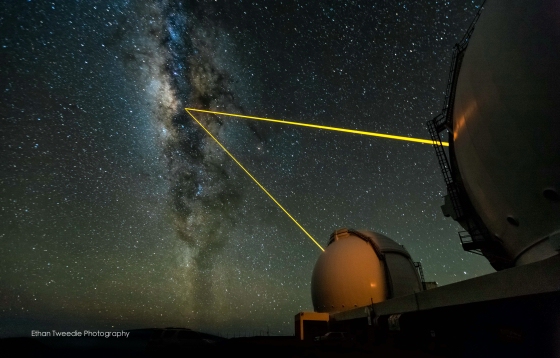Science News
Fast Stars
October 24, 2012
by Josh Roberts

As Einstein might say, speed is relative. It certainly captures our imagination. For example, you may think you’re sitting still, but by some reckoning, you are moving incredibly fast—as Earth spins and orbits within the Solar System and as the Sun makes its way around the Milky Way. In fact, for us to make a full rotation around the galactic center every 250 million years, we have to be moving at the brisk pace of half a million miles an hour!
But as fast as we are moving, it’s a leisurely stroll compared to some stars that have made recent headlines. These so called “hypervelocity stars” are allowing scientists a first hand view of the incredible and mysterious super-massive black hole at the center of our Milky Way galaxy. Since we cannot observe the black hole directly, we study the motion of nearby matter—stars, gas, and dust—to learn much about the black hole’s mass and how it distorts space around it. These observations grant astrophysicists an opportunity to test the inner workings of Einstein’s theory of relativity on a grand scale.
Another group of super-fast superstars out there seems to be related. They are not gravitationally bound to the black hole, or anything else in the galaxy. In fact, they have been flung out from the Milky Way at speeds so great that they will actually escape it entirely! Some scientists have speculated that these “runaway” or “rogue” stars may have once been the companions of the very same hypervelocity stars that orbit within the Milky Way, but these rogue stars were flung off long ago when their partners were pulled into the supermassive black hole’s gravitational influence.
Another possible origin for the stellar speedsters could be a companion or nearby star that went supernova and blasted them out into the great beyond. Astronomers search for these stars before they exit the galaxy by looking for the tell-tale bow shock they create as they pass through the thin gas of the Milky Way, much like the wake a speedboat creates on a calm lake.
No matter their origins, hypervelocity stars and any other super speedy things provide critical windows into relativity and the nature of space and time. Special relativity predicts the ways in which physics will change as something approaches the speed of light; general relativity describes the behavior of objects in intense gravitational fields (like you might find near a black hole, hmm…). These stars and others like them give us a great chance to challenge our ideas about the nature and workings of our universe and get a view “beneath the hood” to understand how it has changed and evolved over time.
Josh Roberts is a program presenter and astronomer at the California Academy of Sciences. He also contributes content to Morrison Planetarium productions.
Image: Ethan Tweedie